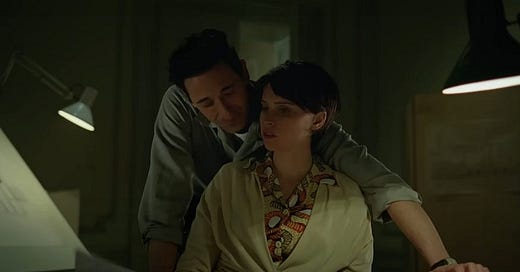Film Review — The Brutalist
Strong performances and old-school epic evocations enhance Brady Corbet’s tale of immigration, architecture, and the American Dream
Brady Corbet’s The Brutalist is a curious beast. On the one hand, it has the trappings of an old-school Hollywood epic, structured as such in its cinematic presentation. Shot in 35mm VistaVision (blown up to 70mm in certain venues), it features an overture, intermission, and full frame chapter captions: “Part 1: The E…
Keep reading with a 7-day free trial
Subscribe to The Dillon Empire: Simon Dillon on Substack to keep reading this post and get 7 days of free access to the full post archives.





